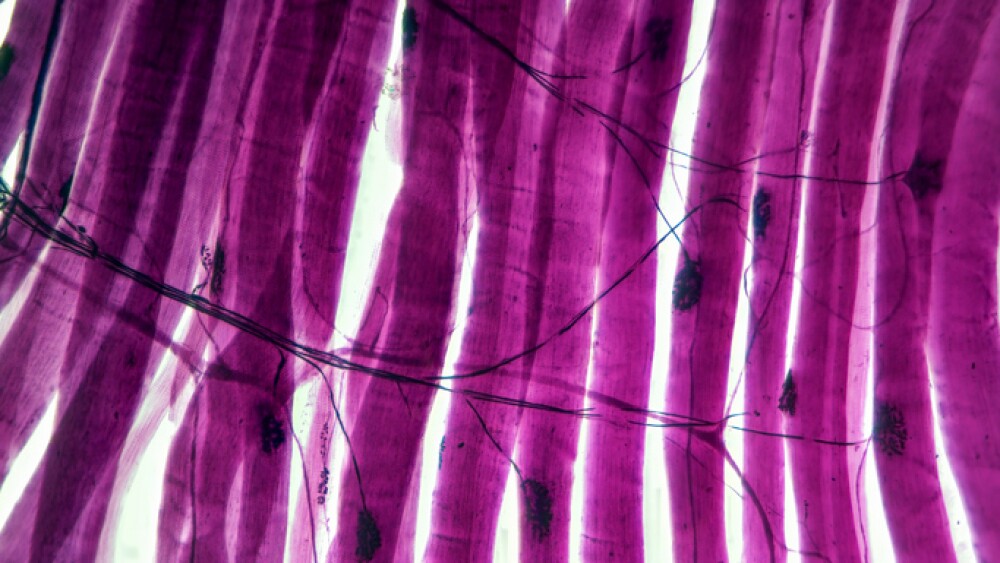Immunome Presents Preclinical Data on Novel Anti-EPN1 Antibody IMM20059 at the Society for Immunotherapy of Cancer’s (SITC) 37th Annual Meeting.
- IMM20059, Immunome’s epsin 1 (EPN1)-specific antibody, binds to the surface of multiple tumor cell lines, including lung, breast and prostate cancers in preclinical testing -
- EPN1 appears to play an important role in cancer formation and progression, and IMM20059 may have the ability to improve response to immunotherapy -
- Combinatorial effect (> 50% reduction in tumor volume) was demonstrated with IMM20059 and anti-PD-L1 treatment atezolizumab -
EXTON, Pa.--(BUSINESS WIRE)--Immunome, Inc. (Nasdaq: IMNM), a clinical-stage biopharmaceutical company that utilizes its human memory B cell platform to discover and develop first-in-class antibody therapeutics, today announced that it is presenting a poster at the Society for Immunotherapy of Cancer’s (SITC) 37th Annual Meeting in Boston, Massachusetts highlighting the Company’s preclinical data of IMM20059, a novel anti-epsin 1(EPN1) antibody.
“We continue to be pleased with the robust capabilities of our Discovery Engine to identify novel anti-tumor targets, including those that are abnormally (ectopically) expressed on tumor cells which have the potential to fundamentally shift treatment paradigms,” commented Purnanand Sarma, PhD, President and CEO of Immunome. “While further preclinical work will be required, we are quite encouraged by the results presented at SITC today. Treatment with the IMM20059 + atezolizumab combination resulted in over a 50% reduction in tumor volume (p<0.05) compared to isotype-treated control, greater than either one separately. This leads us to believe that there is a potential combinatorial effect between the two pathways, and we look forward to exploring this phenomena further in additional pre-clinical studies.”
Lack of response and immunoresistance to checkpoint inhibitors is a well-known challenge in cancer treatment. While the epsin-1 protein is known to be upregulated in a variety of tumor types, it can also be ectopically expressed on the tumor cell surface, as demonstrated in Immunome’s poster, offering a new approach to cancer therapy. Insights into the role of epsin-1 as a potential target for cancer is evolving, but research by others1 also suggests targeting EPN1 has the potential to inhibt tumor growth. The findings presented by Immunome at SITC further suggest that combining an EPN1-targeting antibody, like IMM20059, with checkpoint inhibitor treatment could reactivate or increase immune response to the tumor.
Immunome Poster at SITC Annual Meeting (November 8-12, 2022):
Title: IMM20059, a novel anti-EPN1 antibody, in combination with atezolizumab significantly enhances tumor regression in the B16.F10 syngeneic melanoma model compared to anti-PD-L1 monotherapy
Authors: Fang Shen, PhD, John P. Dowling, Pavel A. Nikitin, Cezary R. Swider, Chris Nicolescu, Halley Shukla, Jamie L. Bingaman-Steele, Nirja B. Patel, Eden L. Sikorski, Benjamin C. Harman, Jillian M. DiMuzio, Karen Lundgren, Yumi Ohtani, Michael J. Morin, Matthew K. Robinson
Link: https://www.sitcancer.org/2022/abstracts/abstract-titles-publications
Date/Time: Nov. 10, 2022/9:00am
Poster/Abstract Number: 823
The poster presentation, IMM20059, a novel anti-EPN1 antibody, in combination with atezolizumab significantly enhances tumor regression in the B16.F10 syngeneic melanoma model compared to anti-PD-L1 monotherapy, highlights novel discoveries related to combinatorial activity between existing immune checkpoint inhibitors and the novel tumor target epsin 1 (EPN1).
Immunome’s preclinical research of IMM20059 in this poster demonstrated that:
- EPN1 is upregulated in multiple cancers and is ectopically expressed on tumor cell surfaces.
- IMM20059 binds with high affinity to both purified EPN1 protein and to the surface of B16.F10 melanoma tumor cells.
- In the combination treatment of IMM20059 and anti-PD-L1 atezolizumab, significant tumor regression was induced compared to IMM20059 or atezolizumab treatment alone, suggesting a combinatorial effect between the two anti-tumoral pathways.
- Combination treatment enhanced the production of intratumoral chemokines, MIP-1a, MIP-1b, and RANTES.
About SITC
Established in 1984, the Society for Immunotherapy of Cancer (SITC) is a nonprofit organization of medical professionals dedicated to improving cancer patient outcomes by advancing the development, science and application of cancer immunotherapy and tumor immunology. SITC is comprised of influential basic and translational scientists, practitioners, health care professionals, government leaders and industry professionals around the globe. Through educational initiatives that foster scientific exchange and collaboration among leaders in the field, SITC aims to one day make the word “cure” a reality for cancer patients everywhere. Learn more about SITC, our educational offerings and other resources at sitcancer.org and follow us on Twitter, LinkedIn, Facebook and YouTube.
About Immunome
Immunome is a biopharmaceutical company that utilizes its proprietary human memory B cell platform to discover and develop first-in-class antibody therapeutics that are designed to change the way diseases are treated. The company’s initial focus is developing therapeutics to treat oncology and infectious diseases, including COVID-19. Immunome’s proprietary discovery engine identifies novel therapeutic antibodies and their targets by leveraging the highly educated components of the immune system, memory B cells, from patients whose bodies have learned to fight off their disease. For more information, please visit www.immunome.com.
Forward-Looking Statements
This press release includes certain disclosures that contain “forward-looking statements” intended to qualify for the “safe harbor” from liability established by the Private Securities Litigation Reform Act of 1995, as amended, including, without limitation, express or implied statements regarding Immunome’s beliefs and expectations on the advancement of its discovery engine, the importance of B-cell families in patients, execution of its regulatory, research, clinical and strategic plans and anticipated upcoming milestones for its platform and programs, including expectations regarding, among other things: the timing and results of its preclinical studies and clinical trials; clinical plans; general regulatory actions; translation of preclinical data into clinical safety and efficacy; and therapeutic potential and benefits of, and possible need and demand for, our product candidates that are not historical fact. Forward-looking statements may be identified by the words “anticipate,” “believe,” “estimate,” “expect,” “intend,” “plan,” “project,” “suggest,” “can,” “may,” “will,” “could,” “should,” “seek,” “potential” and similar expressions. Forward-looking statements are based on Immunome’s current expectations and are subject to inherent uncertainties, risks and assumptions that are difficult to predict. Factors that could cause actual results to differ include, but are not limited to, those risks and uncertainties associated with: the impact of the COVID-19 pandemic on Immunome’s business, operations, strategy, goals and anticipated milestones; the fact that research and development data are subject to differing interpretations and assessments; Immunome’s ability to execute on its strategy, including with respect to its R&D efforts, IND submissions and other regulatory filings, timing of these filings and the timing and nature of governmental authority feedback regarding the same, initiation and completion of any clinical studies, confirmatory testing and other anticipated milestones as and when anticipated; the effectiveness of Immunome’s product candidates, including the possibility that further preclinical data and any clinical trial data may be inconsistent with the data used for advancing the product candidates and that further variants of concern could emerge; Immunome’s ability to fund operations and raise capital; Immunome’s reliance on vendors; the competitive landscape; and the additional risks and uncertainties set forth more fully under the caption “Risk Factors” in Immunome’s Annual Report on Form 10-K filed with the United States Securities and Exchange Commission (SEC) on March 28, 2022, and elsewhere in Immunome’s other filings and reports with the SEC. Forward-looking statements contained in this announcement are made as of this date, and Immunome undertakes no duty to publicly update or revise any forward looking statements, whether as a result of new information, future events or otherwise, except as may be required under applicable law. In this press release, we may discuss our current and potential future product candidates that have not yet completed clinical trials or been approved for marketing by the U.S. Food and Drug Administration or other governmental authority, including expectations about their therapeutic potential and benefits thereof. No representation is made as to the safety or effectiveness of these current or potential future product candidates for the use for which such product candidates are being studied.
References
- Dong, Y., et. al. (2015). Motif mimetic of epsin perturbs tumor growth and metastasis. J Clin Invest. 125(12):4349-4364. https://doi.org/10.1172/JCI80349.
View source version on businesswire.com: https://www.businesswire.com/news/home/20221107005460/en/
Contacts
Immunome Contact
Corleen Roche
Chief Financial Officer
Immunome, Inc.
investors@immunome.com
Investor Contact
Laurence Watts
Managing Director
Gilmartin, LLC
laurence@gilmartinir.com
Media Contact
Gwen Schanker
Account Supervisor
LifeSci Communications
gschanker@lifescicomms.com
Source: Immunome, Inc.





